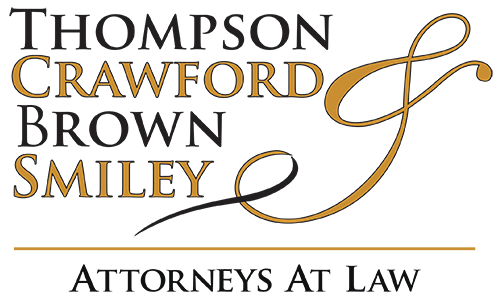PERSONAL INJURY ATTORNEYS IN NORTH FLORIDA
OUR PERSONAL INJURY ATTORNEYS CARE
If you’ve been injured in an accident that was caused by someone else’s negligence, hiring a personal injury attorney is essential to protect your legal rights and obtain the compensation you deserve. At Thompson, Crawford, Brown & Smiley, our experienced attorneys have a proven track record of success in helping our clients recover maximum compensation for their injuries.
Without the guidance of a skilled personal injury attorney, you could be at a disadvantage when dealing with insurance companies and other parties involved in your case. Insurance companies are notorious for offering lowball settlements to injury victims who are not represented by an attorney. Our lawyers have the knowledge and experience to negotiate with these companies on your behalf and make sure that you receive fair compensation for your injuries, lost wages, and other damages. Don’t take chances with your future – contact Thompson, Crawford, Brown & Smiley today to schedule a free consultation and learn how we can help you.
Call us today for your initial complimentary consultation!
AREAS OF PRACTICE
- Auto Accidents
- Wrongful Death
- Medical Malpractice
- Motorcycle Accidents
- Slip & Fall
- Workers’ Compensation
About Thompson, Crawford, Brown & Smiley
Our litigation knowledge and experience is vast with a history of success in State, Appellate, Florida Supreme Court, U.S. District, U.S. Circuit appellate and Bankruptcy Courts. Founded in 1993, our commitment to superior legal services has always been our cornerstone.
We are one of the few firms in the Tallahassee area to specialize in ERISA law as well bankruptcy, personal injury, commercial litigation, insurance defense, family law and more.
Each of our partners has a broad knowledge base in addition to a specialty that allows them to further their understanding of their chosen law specialization:
- Thomas Thompson’s primary practice is in the litigation field, both as plaintiff and defense counsel.
- Scott Smiley’s practice concentrates on complex family Law matters.
- William Crawford handles the firm’s commercial litigation, bankruptcy, corporate and real estate.
- Mallory Brown is involved in most of the practice areas of the firm including employment claims, probate, and estate planning.
- Alyssa Silva primarily practices in family law
